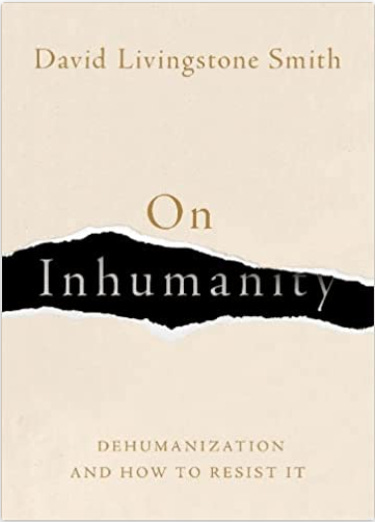The problem with DEI is not the problem
There is a hole in the bucket and our conversational networks of contention keep us deadlocked in an exchange that is full of conflict.
Here are two ideas from my book, Reconstructing Inclusion: Making DEI Accessible, Actionable, and Sustainable and other texts I leaned on in writing it. In addition, I’ve included one quote, a book recommendation, and a video or article that has inspired or influenced me and hopefully will resonate with you, too. (That’s ✌🏿+ 💡📚➕).
Pages 50-51
"At the root of my personal spiritual philosophy is that we are all gifted with the possibility of transformation. It doesn’t mean that it will happen automatically, but it still is in the realm of choice. This even applies to a young man accepted to Harvard, who later had his admission rescinded when his writings in Google Docs, in which he’d used a racial slur two years earlier, when he was sixteen years old, were discovered. Kyle Kashuv was a senior at Marjory Stoneman Douglas High School in southeast Florida, where seventeen of his schoolmates and teachers were left dead from a mass shooting in 2018. Kashuv emerged after the shooting, due to his views, as a vocal and prominent conservative figure. Harvard’s decision was applauded by diversity supporters and seen as “wokeness” rhetoric to be weaponized against the left.
Again, the question is, “How did this particular decision [related to something someone said or did to another person who self-identifies as being part of a subordinated group] help everyone grow to greater understanding about inclusive behavior and leadership with an inclusive mindset?”
My response is, “It didn’t.” In fact, it placed the responsibility on another university or solely back on the shoulders of an eighteen-year-old who has likely never had a dialogue about the impact of his voice. Was there inquiry "on where the usage of that type of language originates from? Additionally, if not Harvard, where will he or others who behaved like him end up in college? Who accepts this student whose exposure after the tragedy (and he is not alone here) may have given him access to networks that helped him get into Harvard? Conversely, it doesn’t matter how he got accepted—he did. And rescinding his acceptance without him having the opportunity to engage in dialogue that could be transformative isn’t helpful to anyone. As Monica Hesse asks, “So, what should we do with the Kyle Kashuvs of this world?”
Of course, Kashuv is not excused for what he said. There are implications for such words, and more so when you’ve invited the spotlight onto yourself. At the same time, there is a process of redemption that is not only about people like Kashuv. And when I say like Kashuv, I mean any person who has had something they said or did in the past, maybe once or twice, define them forever."
Photo by Luis Morera on Unsplash
Page 69
"When thinking about the DEI field and all the hard and very emotionally taxing work that has been contributed over the years to corporate social justice, I am often reminded of a Sesame Street skit that I watched as a child.
Jim Henson was the voice of the puppet Henry, and Academy Award–winning Actress Rita Moreno was Liza, Henry’s wife. They sang a song about a deadlock situation. If you haven’t seen the video, it is an easy DuckDuckGo search away. Imagine the rising frustration of Liza as the song progresses. The lyrics start off with Henry telling Liza about his problem of a hole (in his bucket). Liza responds that he should fix it, and the result is that with all of Liza’s suggestions, Henry has a counterpoint ending exactly where he began; there is still a hole in the bucket because none of what was suggested could be done without having an intact container from the outset.
If you watch the video (this additional one is in tribute to the late, great, Harry Belafonte (1927-2023), Liza reaches a point of no return. She goes silent and resigns, ceasing her desire to play in what turns out to be a deadlocked exchange.
So, the problem with DEI is not the problem. There is a hole in the bucket and our conversational networks of contention keep us deadlocked in an exchange that is full of conflict. But as a field we have rarely sought out common frameworks to resolve them."
💡A Quote
“When you are solving a problem, you are taking action to have something go away: the problem. When you are creating, you are taking action to have something come into being: the creation. Notice that the intentions of these actions are opposite.”
—Robert Fritz, The Path of Least Resistance
📚A Book
Photo Credit: Amazon.com
On Inhumanity: Dehumanization and How to Resist It by David Livingstone Smith
➕An Article
Race Delusion: Lies that Divide Us (an interview with David Livingstone Smith, by Robert J. Benz)
David Smith explains the connections between race, racism, and dehumanization. And makes the case (as he does in other articles I have posted) for “getting over race.”
I hope this was helpful. . . Make it a great day! ✌🏿



